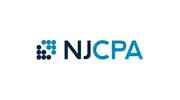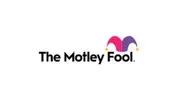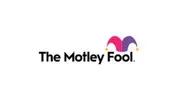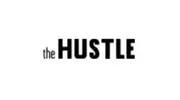Media Coverage

Retail Insider
At the beginning of the trend, indeed. It’s a sentiment echoed by Dr. Merav Ozair, leading blockchain expert and fintech professor at Rutgers Business School, who also sees the untapped potential inherent in the tokenization of digital assets as well as physical products. She, too, points to the powerful authentication capabilities of NFTs as the most dynamic and purposeful qualities they offer, suggesting that their applications within the retail setting are immense. And, considering when their use might be more widely utilized across the industry, she says that their impact is imminent.
“We don’t need to think too far out when it comes to the use of NFTs throughout industries, particularly when it comes to physical products within the retail ecosystem,” she asserts. “In fact, there are already use cases. Just recently, BlockBar was launched, which is a marketplace for liquor and luxury spirits that’s backed by the blockchain. And, it’s not the first, either. Purveyors of liquor have been selling their products as NFTs for some time now on various platforms. The ability to authenticate product as legitimate with tokenized certification is what’s driving current interest in the notion of NFTs, and it’s interest that is only going to increase going forward.”
“We don’t need to think too far out when it comes to the use of NFTs throughout industries, particularly when it comes to physical products within the retail ecosystem,” she asserts. “In fact, there are already use cases. Just recently, BlockBar was launched, which is a marketplace for liquor and luxury spirits that’s backed by the blockchain. And, it’s not the first, either. Purveyors of liquor have been selling their products as NFTs for some time now on various platforms. The ability to authenticate product as legitimate with tokenized certification is what’s driving current interest in the notion of NFTs, and it’s interest that is only going to increase going forward.”

Wall Street Journal
They say they will save the planet—but for whom?
“Solar and Wind Force Poverty on Africa” (op-ed by Yoweri K. Museveni, Oct. 25)—and all under the guise of saving the planet. But saving it for whom? Several hundred million Africans live in poverty, thanks partly to a lack of reliable energy. The imposition on the Third World of green mandates, like tariffs, must inevitably hamper poor nations’ ability to produce goods and services.
Professor Mark Castelino
Rutgers Business School
Newark, NJ
“Solar and Wind Force Poverty on Africa” (op-ed by Yoweri K. Museveni, Oct. 25)—and all under the guise of saving the planet. But saving it for whom? Several hundred million Africans live in poverty, thanks partly to a lack of reliable energy. The imposition on the Third World of green mandates, like tariffs, must inevitably hamper poor nations’ ability to produce goods and services.
Professor Mark Castelino
Rutgers Business School
Newark, NJ

ROI-NJ
If there’s one thing Rutgers University professor Kevin Lyons is sure of, it’s this: People might have an image in their heads of the spinning blades of offshore wind turbines …
From end to end, just one of these turbines’ blades can match or even surpass the size of a football field. Pieced together, these megastructures are far bigger than you might expect — giving, in the view of Lyons, their local manufacturing and assembly an outsized importance in this new industry’s success.
As the expert in the Supply Chain Management Department at Rutgers Business School describes it, their transport wouldn’t be a breeze. Just one massive blade may have to be loaded onto a series of heavy-duty trucks. Maneuvering those blade components through towns on a path from the Midwest to the East Coast could take a week or more. Shipping from Europe wouldn’t be any quicker.
Now, Lyons said, multiply that by the thousands of turbine blades needed for an effective offshore wind farm.
“I always joke with my colleagues, ‘With that model, it’s going to take 10,000 years to get this built,’” he said.
Lyons, who was also named to Gov. Phil Murphy’s New Jersey Council on the Green Economy, is a supply chain person. That means he’s interested in taking the big-picture renewable energy ideas and putting them under a logistics microscope: How do you move parts around? Where are supplies coming from? Who manufactured those parts?
He’s hoping a lot of that will have Garden State answers.
“Not having a strong local sourcing strategy, to me, at least, is not very wise,” he said. “Shipping all these needed components from here, there and everywhere would take forever. That’s why something like what New Jersey is doing with its Salem County site is critically important.”
From end to end, just one of these turbines’ blades can match or even surpass the size of a football field. Pieced together, these megastructures are far bigger than you might expect — giving, in the view of Lyons, their local manufacturing and assembly an outsized importance in this new industry’s success.
As the expert in the Supply Chain Management Department at Rutgers Business School describes it, their transport wouldn’t be a breeze. Just one massive blade may have to be loaded onto a series of heavy-duty trucks. Maneuvering those blade components through towns on a path from the Midwest to the East Coast could take a week or more. Shipping from Europe wouldn’t be any quicker.
Now, Lyons said, multiply that by the thousands of turbine blades needed for an effective offshore wind farm.
“I always joke with my colleagues, ‘With that model, it’s going to take 10,000 years to get this built,’” he said.
Lyons, who was also named to Gov. Phil Murphy’s New Jersey Council on the Green Economy, is a supply chain person. That means he’s interested in taking the big-picture renewable energy ideas and putting them under a logistics microscope: How do you move parts around? Where are supplies coming from? Who manufactured those parts?
He’s hoping a lot of that will have Garden State answers.
“Not having a strong local sourcing strategy, to me, at least, is not very wise,” he said. “Shipping all these needed components from here, there and everywhere would take forever. That’s why something like what New Jersey is doing with its Salem County site is critically important.”

ROI-NJ
Serial entrepreneur and Newark startup activist Anthony Frasier has hitched his wagon to the skyrocketing podcasting industry. His podcast network is producing cutting-edge work that connects him to his roots and his community.
Going back to his beginnings in podcasting, Frasier noted that, when he started out, he had nothing. He didn’t even have production equipment or content, he only knew that he wanted to tell stories. But Lyneir Richardson, executive director of the Center for Urban Entrepreneurship & Economic Development at Rutgers Business School, gave him a chance when he pitched a podcast that would feature interviews with venture capitalists. Frasier admits he didn’t know much about what he was doing, but the podcast, called “VC Cheat Sheet,” turned out well.
“It really put the name of the Center for Urban Entrepreneurship out there,” and it was a very successful podcast for Rutgers, he said.
Going back to his beginnings in podcasting, Frasier noted that, when he started out, he had nothing. He didn’t even have production equipment or content, he only knew that he wanted to tell stories. But Lyneir Richardson, executive director of the Center for Urban Entrepreneurship & Economic Development at Rutgers Business School, gave him a chance when he pitched a podcast that would feature interviews with venture capitalists. Frasier admits he didn’t know much about what he was doing, but the podcast, called “VC Cheat Sheet,” turned out well.
“It really put the name of the Center for Urban Entrepreneurship out there,” and it was a very successful podcast for Rutgers, he said.

Find MBA
Rudolf Leuschner, associate professor of supply chain management at Rutgers Business School in New Jersey, agrees that Covid has raised the profile of global supply chains, mostly because of failures. He says that the field had been neglected and the dominant strategies had grown rigid, so a fresh focus was long overdue.
“The lack of suitable literature has been a known topic for decades, but it wasn’t yet bad enough to cause large-scale delays as they do now,” he says. “More companies have realized that they need to become more serious about supply chain talent than before.”
Corporations have started placing more focus on their supply chain managers, who once toiled in relative obscurity before global threats started intensifying. As their status is elevated, the job prospects for MBA students in this once specialist field are increasing.
Rutgers runs a course for working professionals. “A couple of years ago 20-30 percent of students might have been promoted or received a raise while in the program,” says Leuschner. “Now more than half have been promoted or received a raise before graduation. This shows how much demand there is for supply chain management talent.”
MBA students, who might once have focused more on finance, are now keener to explore supply chain management. About 10-20 percent more MBA students are taking supply chain management courses at Rutgers than before Covid. “I think some of that is driven by the strong labor market, but there is also increased interest from professionals in the field,” Leuschner says.
“The lack of suitable literature has been a known topic for decades, but it wasn’t yet bad enough to cause large-scale delays as they do now,” he says. “More companies have realized that they need to become more serious about supply chain talent than before.”
Corporations have started placing more focus on their supply chain managers, who once toiled in relative obscurity before global threats started intensifying. As their status is elevated, the job prospects for MBA students in this once specialist field are increasing.
Rutgers runs a course for working professionals. “A couple of years ago 20-30 percent of students might have been promoted or received a raise while in the program,” says Leuschner. “Now more than half have been promoted or received a raise before graduation. This shows how much demand there is for supply chain management talent.”
MBA students, who might once have focused more on finance, are now keener to explore supply chain management. About 10-20 percent more MBA students are taking supply chain management courses at Rutgers than before Covid. “I think some of that is driven by the strong labor market, but there is also increased interest from professionals in the field,” Leuschner says.

NJCPA
Many students don’t give significant thought to the CPA Exam or licensure until later in their college careers. Perhaps the CPA license becomes a blip on their radar during senior year. After all, most candidates can’t sit for the Exam until post-graduation. However, giving thought to the process in the early stages of education is crucial. A basic awareness of the requirements for the CPA Exam and licensure in the sophomore or junior year (as opposed to a first exposure in the senior year) can make a meaningful difference for students.
Planning is key for several reasons. As educators and employers, we can encourage our future CPAs to begin this journey as early as possible. Here are some general guidelines for students to follow:
Planning is key for several reasons. As educators and employers, we can encourage our future CPAs to begin this journey as early as possible. Here are some general guidelines for students to follow:

WalletHub
To find the best car insurance in New Jersey for different types of drivers, WalletHub’s editors compared coverage options and rates from local, regional and national auto insurance providers. You can find the top options listed below.
Ask the experts.
Francisco J. QuevedoBA, MBA, CAGSB, DPS, Assistant Professor of Professional Practice, Marketing Department, Rutgers Business School, The State University of New Jersey
Why are car insurance prices so different from state to state?
Driving conditions differ from state to state, some are flat some mountainous, some have snow others do not, and so do speed limits (Illinois=70 mph for instance), tax and legal frameworks, urban and population profiles. I am sure the loss ratio in Idaho is different than that of New York, and then with each state, city vs. countryside results will also differ.
Are car insurance companies really able to save drivers as much as they advertise?
Yes, if they restructure their rate schedules according to the appropriate profile. Some drivers are more prone to accidents, some models are also more prone to accidents and particularly to theft.
What are the most important things to look for when shopping for car insurance?
Reputation matters (company image), coverage and premiums, of course, response speeds reflect a service orientation, and the PPO is crucial when accidents happen.
Ask the experts.
Francisco J. QuevedoBA, MBA, CAGSB, DPS, Assistant Professor of Professional Practice, Marketing Department, Rutgers Business School, The State University of New Jersey
Why are car insurance prices so different from state to state?
Driving conditions differ from state to state, some are flat some mountainous, some have snow others do not, and so do speed limits (Illinois=70 mph for instance), tax and legal frameworks, urban and population profiles. I am sure the loss ratio in Idaho is different than that of New York, and then with each state, city vs. countryside results will also differ.
Are car insurance companies really able to save drivers as much as they advertise?
Yes, if they restructure their rate schedules according to the appropriate profile. Some drivers are more prone to accidents, some models are also more prone to accidents and particularly to theft.
What are the most important things to look for when shopping for car insurance?
Reputation matters (company image), coverage and premiums, of course, response speeds reflect a service orientation, and the PPO is crucial when accidents happen.

NJ.com
Supply chain problems may hamper getting items to stores for gift giving, but retailers forecast record breaking sales as some consumers started shopping before Halloween.
It also depends on what they’re willing to pay. But the supply chain is putting pressure on consumers to start shopping early.
“It creates demand, hopefully not on the level of toilet paper (shortages during the pandemic),” said Assistant Professor John R. Impellizzeri, Director Rutgers Center for Supply Chain Management. “If you see something you want, you buy it. You don’t shop around for the best price. You’re just glad to get it.”
It also depends on what they’re willing to pay. But the supply chain is putting pressure on consumers to start shopping early.
“It creates demand, hopefully not on the level of toilet paper (shortages during the pandemic),” said Assistant Professor John R. Impellizzeri, Director Rutgers Center for Supply Chain Management. “If you see something you want, you buy it. You don’t shop around for the best price. You’re just glad to get it.”

QUARTZ
In 2013, a new cryptocurrency, Dogecoin, was minted as a joke making fun of the speculative frenzy surrounding Bitcoin. Then last August, an anonymous developer created the Shiba Inu coin, the canine mascot for Dogecoin, riffing off the previous prank. Somewhere along the way, the internet gags became very real.
The two “meme coins,” as they are called, are now the ninth and tenth most valuable cryptocurrencies by market capitalization worth a collective $79 billion. On Oct. 27, Shiba Inu, briefly surpassed the eight-year-old dogecoin in value for the first time. The coin soared on speculation that it might be listed on the exchange Robinhood.
Merav Ozair, a blockchain expert and fintech professor at Rutgers Business School, fears that this could have serious consequences for the entire crypto space. “I’m afraid it will break down, it will blow up in the face of people who took the risk, then it will give a bad name to everything that has to do with blockchain and cryptocurrency,” she said. “People are not paying attention to the real use cases.”
The two “meme coins,” as they are called, are now the ninth and tenth most valuable cryptocurrencies by market capitalization worth a collective $79 billion. On Oct. 27, Shiba Inu, briefly surpassed the eight-year-old dogecoin in value for the first time. The coin soared on speculation that it might be listed on the exchange Robinhood.
Merav Ozair, a blockchain expert and fintech professor at Rutgers Business School, fears that this could have serious consequences for the entire crypto space. “I’m afraid it will break down, it will blow up in the face of people who took the risk, then it will give a bad name to everything that has to do with blockchain and cryptocurrency,” she said. “People are not paying attention to the real use cases.”

CU Broadcast
During Filene Research Institute's 2021 big.bright.minds. Conference, Marketing + Communications Director for Filene Research Institute Holly Fearing joined us at the end of the day to provide a big.bright.minds day 1 wrap-up.
Here are some of the items we discussed in our wrap up:
How good it is to be back in person again
Takeaways from Dr. Jeffrey Robinson, Rutgers Business School, keynote: "How Can Credit Unions Grow by Fostering an Entrepreneurial Culture?" (5:30 into the broadcast)
Takeaways from Dr. Lisa Servon, University of Pennsylvania, presentation: "How Becoming More Inclusive will Lead to Growth"
Takeaways from Samantha Paxson, CO-OP Financial Services, presentation: "Rapid Market Shifts: Three Urgent Calls to Action for Financial Institutions"
Filene Foundry: Growth through Innovation
Crashers' program and its continued evolution in guiding future leaders
Here are some of the items we discussed in our wrap up:
How good it is to be back in person again
Takeaways from Dr. Jeffrey Robinson, Rutgers Business School, keynote: "How Can Credit Unions Grow by Fostering an Entrepreneurial Culture?" (5:30 into the broadcast)
Takeaways from Dr. Lisa Servon, University of Pennsylvania, presentation: "How Becoming More Inclusive will Lead to Growth"
Takeaways from Samantha Paxson, CO-OP Financial Services, presentation: "Rapid Market Shifts: Three Urgent Calls to Action for Financial Institutions"
Filene Foundry: Growth through Innovation
Crashers' program and its continued evolution in guiding future leaders

New York Post
“Sometimes [the Winkleviosses] claim that they got into Bitcoin because of the philosophy,” said Merav Ozair, a financial technology professor at Rutgers Business School. “But I think they got into it because they could make money. The [original] premise of cryptocurrency was ‘for the people by the people,’ but greed got in the way and it all became lurid.”

Punch
“At the end of the day, the biggest hurdle is around authenticity,” Sam Falic notes. When a bottle is passed from a buyer to seller, “there’s no way to prove it unless the next person tests the liquid, which kind of ruins the whole thing.”
To pre-empt that issue, BlockBar takes the bottles direct from the producer and tucks them away in a storage facility in Singapore. A buyer can redeem the bottle to drink (the site facilitates compliance information for the import process and shipping, similar to an online e-commerce platform) or hold it in the Singapore facility indefinitely.
But, odds are, many will trade the NFT, as they might any other commodity, flipping it over and over again for profit, as they did this past Tuesday. All the while, the bottle never leaves the climate-controlled warehouse in Singapore. All transactions are listed on the Ethereum blockchain, so it can be traced back to the brand. That traceability is the primary advantage of an NFT marketplace, experts say.
“An NFT is a certificate of authentication,” says Dr. Merav Ozair, a leading blockchain expert and financial technology professor at Rutgers Business School. “It’s harder to scam with NFTs. Because it’s on the blockchain, eventually you have to show the physical good, that it really exists.” That accountability has led to an increase in NFTs—and secondary markets to sell those NFTs—across an array of luxury goods spaces, she notes, from retailers like Dolce & Gabbana to real estate.
To pre-empt that issue, BlockBar takes the bottles direct from the producer and tucks them away in a storage facility in Singapore. A buyer can redeem the bottle to drink (the site facilitates compliance information for the import process and shipping, similar to an online e-commerce platform) or hold it in the Singapore facility indefinitely.
But, odds are, many will trade the NFT, as they might any other commodity, flipping it over and over again for profit, as they did this past Tuesday. All the while, the bottle never leaves the climate-controlled warehouse in Singapore. All transactions are listed on the Ethereum blockchain, so it can be traced back to the brand. That traceability is the primary advantage of an NFT marketplace, experts say.
“An NFT is a certificate of authentication,” says Dr. Merav Ozair, a leading blockchain expert and financial technology professor at Rutgers Business School. “It’s harder to scam with NFTs. Because it’s on the blockchain, eventually you have to show the physical good, that it really exists.” That accountability has led to an increase in NFTs—and secondary markets to sell those NFTs—across an array of luxury goods spaces, she notes, from retailers like Dolce & Gabbana to real estate.

The Harvard Crimson
John M. Longo, a professor at Rutgers Business School and Chief Investment Officer for the Beacon Trust, said Harvard’s endowment surpassed the return rate of the standard 60-40 stock and bond portfolio benchmark.
“Harvard outperformed by about 9.7 percent, so on that simple measure over a one-year period, I think it did a very good job,” Longo said.
Longo said it is difficult to directly compare the performance of Harvard’s endowment with those of peer institutions since HMC and its counterparts do not typically provide a detailed account of their strategy behind risk-taking.
“You can’t make a strong comparison unless you know what risk the other endowments are taking,” Longo said.
“Harvard outperformed by about 9.7 percent, so on that simple measure over a one-year period, I think it did a very good job,” Longo said.
Longo said it is difficult to directly compare the performance of Harvard’s endowment with those of peer institutions since HMC and its counterparts do not typically provide a detailed account of their strategy behind risk-taking.
“You can’t make a strong comparison unless you know what risk the other endowments are taking,” Longo said.

WalletHub
The best ways to lower your car insurance premiums are to compare prices among insurers, take advantage of all the discounts you can, and adjust your coverage to fit your budget. Drivers can save an average of 64% by switching from full coverage to minimum coverage, for example.
How often should drivers shop around for lower car insurance rates?
A common misconception is that drivers have to wait for the end of their current agreements to switch. They may switch insurers anytime. Unfortunately, when it comes to car insurance, long-term loyalty does not pay off, and there is cost creep. Given the time cost of shopping around, I would suggest settling into a routine. For example, drivers could seek 2-3 alternative quotes for the same agreement terms annually or conduct a comprehensive search every 2-3 years.
Can (John) UslayPh.D., Vice-Dean, Academic Programs and Innovations, Professor of Marketing, Chair, Entrepreneurial Marketing SIG, AMA, Rutgers Business School at Newark and New Brunswick
How often should drivers shop around for lower car insurance rates?
A common misconception is that drivers have to wait for the end of their current agreements to switch. They may switch insurers anytime. Unfortunately, when it comes to car insurance, long-term loyalty does not pay off, and there is cost creep. Given the time cost of shopping around, I would suggest settling into a routine. For example, drivers could seek 2-3 alternative quotes for the same agreement terms annually or conduct a comprehensive search every 2-3 years.
Can (John) UslayPh.D., Vice-Dean, Academic Programs and Innovations, Professor of Marketing, Chair, Entrepreneurial Marketing SIG, AMA, Rutgers Business School at Newark and New Brunswick

Harvard Business Review
Research led by Daniel Levin from Rutgers Business School examined the benefits of reaching out to dormant ties. The researchers asked people to make a list of 10 current connections and 10 people that they haven’t reached out to in two or three years. Participants were then asked to reach out to those people for advice or help with a project. Levin and his colleagues found that dormant ties were extraordinarily powerful in that they provided their connections with more creative ideas, and more surprisingly, the trust within those relationships had endured.

ValuePenguin by Lendingtree
Health insurance premiums and medical expenses are tax deductible only if you pay for them out-of-pocket. Furthermore, your financial situation, along with where you receive health insurance from, will play a large part in determining if the costs will be eligible for tax deductions.
Expert Insights to Help You Make Smarter Financial Decisions
Jay Soled
Professor and Director of Master of Accountancy in Taxation, Rutgers University
In your opinion, which has more perceived value: a partial reimbursement after making a large payment or paying the correct amount upon time of service? Why?
Ideally, a taxpayer should owe money on April 15. Why? If the taxpayer anticipates a refund, the taxpayer has essentially given a tax-free loan to the government.
At what point does itemizing tax deductions become more worthwhile than taking the standard deduction? What tips do you have to make itemizing deductions less intimidating?
Opting to itemize only makes sense if doing so yields tax savings. By utilizing prepackaged software, securing such deductions is a breeze.
Therapy and travel costs associated with medical care are examples of purchases that are eligible for tax deductions. What advice would you give for consumers to better track tax-deductible purchases throughout the year?
There are many self-help books and articles that provide checklists of deductible expenses. Capitalize upon these resources and keep excellent records. You will be richly rewarded.
Expert Insights to Help You Make Smarter Financial Decisions
Jay Soled
Professor and Director of Master of Accountancy in Taxation, Rutgers University
In your opinion, which has more perceived value: a partial reimbursement after making a large payment or paying the correct amount upon time of service? Why?
Ideally, a taxpayer should owe money on April 15. Why? If the taxpayer anticipates a refund, the taxpayer has essentially given a tax-free loan to the government.
At what point does itemizing tax deductions become more worthwhile than taking the standard deduction? What tips do you have to make itemizing deductions less intimidating?
Opting to itemize only makes sense if doing so yields tax savings. By utilizing prepackaged software, securing such deductions is a breeze.
Therapy and travel costs associated with medical care are examples of purchases that are eligible for tax deductions. What advice would you give for consumers to better track tax-deductible purchases throughout the year?
There are many self-help books and articles that provide checklists of deductible expenses. Capitalize upon these resources and keep excellent records. You will be richly rewarded.

Rutgers Today
As President Joseph Biden announces a “90-day sprint” of around-the-clock operating hours at ports on the West Coast to get goods moving – a plan also intended to avoid shortages and continued price increases – we asked Rudi Leuschner, a supply chain professor at Rutgers Business School – Newark and New Brunswick, to explain the reasons for the supply chain problems and how they may impact the holiday season for U.S. consumers.
Why are ships backing up at the ports, preventing them from being unloaded?
It’s a simple capacity issue. Each port has a certain level of throughput that they can manage per day and per week. What’s been happening in the last six months or so is that there are more ships showing up at each port then can be processed. That is for a variety of reasons. Some of them had to do with shortages of key items and port closures in key areas that depressed the supply of items. Now, we have the opposite problem, everyone’s trying to catch up, everyone’s not just ordering what they need but they’re trying to build up their inventory that was depleted due to supply shortages that we saw during the pandemic.
Why are ships backing up at the ports, preventing them from being unloaded?
It’s a simple capacity issue. Each port has a certain level of throughput that they can manage per day and per week. What’s been happening in the last six months or so is that there are more ships showing up at each port then can be processed. That is for a variety of reasons. Some of them had to do with shortages of key items and port closures in key areas that depressed the supply of items. Now, we have the opposite problem, everyone’s trying to catch up, everyone’s not just ordering what they need but they’re trying to build up their inventory that was depleted due to supply shortages that we saw during the pandemic.

The Daily Targum
Rutgers University Business for Youth (RUBY) is a pre-college program for high school students in underserved communities that exists to introduce them to college and different career paths in the business field through various activities and guidance.
Ronald Richter, an assistant professor of professional practice in the Department of Finance and Economics and director of RUBY’s summer program, said the curriculum for the program is designed to improve students’ skills related to business acumen as well as soft skills such as resume writing and public speaking.
Students are eligible to register for RUBY in their sophomore year of high school and remain in the program until their senior year, he said.
“The goal is to get students thinking about their longer-term life as opposed to their shorter-term life, both from a business perspective ... but also from a soft skill perspective,” Richter said. “We try to bring in people so that the students have interactions with more than just their college mentor, but with other people outside the role in the real world ... we also bring professors to talk them about different disciplines.”
Ronald Richter, an assistant professor of professional practice in the Department of Finance and Economics and director of RUBY’s summer program, said the curriculum for the program is designed to improve students’ skills related to business acumen as well as soft skills such as resume writing and public speaking.
Students are eligible to register for RUBY in their sophomore year of high school and remain in the program until their senior year, he said.
“The goal is to get students thinking about their longer-term life as opposed to their shorter-term life, both from a business perspective ... but also from a soft skill perspective,” Richter said. “We try to bring in people so that the students have interactions with more than just their college mentor, but with other people outside the role in the real world ... we also bring professors to talk them about different disciplines.”

Fund Fire
Bridgewater, the world’s largest hedge fund with approximately $150 billion in assets under management, has partnered with New York’s Barnard College, a private women’s college, to fund a grant that will financially support women studying economics, math, statistics and computer science, provide mentorship support and offer an opportunity for students to pursue an internship at the hedge fund after their junior year.
Early intervention to inform women about careers in the industry is key, and partnerships are a good step, said Lisa Kaplowitz, assistant professor of professional practice in finance and executive director of the Rutgers Center for Women in Business, who has conducted research on the pipeline problem.
“When I hear mentoring, that’s absolutely important. When I hear internships after sophomore and junior year, that’s absolutely vital,” she said.
Men are almost twice as likely as women to understand specific careers and job titles in investment management, Kaplowitz said, citing her research in the recently published book Undiversified: The Big Gender Short in Investment Management. It’s also important for women to be able to see themselves in the industry, she added, noting that women who know high-profile female investors reported being twice as confident they would be able to find a job in investment management compared with women who did not.
Early intervention to inform women about careers in the industry is key, and partnerships are a good step, said Lisa Kaplowitz, assistant professor of professional practice in finance and executive director of the Rutgers Center for Women in Business, who has conducted research on the pipeline problem.
“When I hear mentoring, that’s absolutely important. When I hear internships after sophomore and junior year, that’s absolutely vital,” she said.
Men are almost twice as likely as women to understand specific careers and job titles in investment management, Kaplowitz said, citing her research in the recently published book Undiversified: The Big Gender Short in Investment Management. It’s also important for women to be able to see themselves in the industry, she added, noting that women who know high-profile female investors reported being twice as confident they would be able to find a job in investment management compared with women who did not.

The Motley Fool
What advice would you give to someone interested in investing in blockchain technology?
Dr. Merav Ozair, who is a leading blockchain expert and a FinTech Professor at Rutgers Business School.
Blockchain technology is definitely the future. There is no escaping that. However, it is difficult to predict which projects will last and which will fail and be forgotten.
Most blockchain technology companies are in their early, if not very early stages. Hence, investing in companies utilizing blockchain technologies has all the same risks as investing in a start-up. And like in any start-up, the risk-reward ratio is high.
Therefore, learn about blockchain technology, do a thorough due diligence on any project -- from its technology to business model to execution. Learn about the "problem" it is trying to solve and what solution it's offering -- both from a technological perspective and a business perspective.
There's a lot of potential with blockchain technology, but the execution is in the details.
Dr. Merav Ozair, who is a leading blockchain expert and a FinTech Professor at Rutgers Business School.
Blockchain technology is definitely the future. There is no escaping that. However, it is difficult to predict which projects will last and which will fail and be forgotten.
Most blockchain technology companies are in their early, if not very early stages. Hence, investing in companies utilizing blockchain technologies has all the same risks as investing in a start-up. And like in any start-up, the risk-reward ratio is high.
Therefore, learn about blockchain technology, do a thorough due diligence on any project -- from its technology to business model to execution. Learn about the "problem" it is trying to solve and what solution it's offering -- both from a technological perspective and a business perspective.
There's a lot of potential with blockchain technology, but the execution is in the details.

ABC 6
Gas prices in the United States have surged to a seven-year high as demand for fuel continues to outstrip supply, placing an unwelcome financial strain on consumers that threatens to undermine the economic recovery from the COVID-19 pandemic.
“If the winter is bad in Europe and the U.S. and there’s a shortage of gas and other fuels, countries around the world are going to start rethinking their renewable targets,” said Victor Glass, director of the Center for Research in Regulated Industries at Rutgers Business School.
“If the winter is bad in Europe and the U.S. and there’s a shortage of gas and other fuels, countries around the world are going to start rethinking their renewable targets,” said Victor Glass, director of the Center for Research in Regulated Industries at Rutgers Business School.

Forbes
Noa Gafni is the executive director of the Rutgers Institute for Corporate Social Innovation. She said,” Too often, we treat diversity, equity, and inclusion as a ‘tick the box’ exercise and not as a source of organizational strength.
“Crises are often a result of blindspots. Whether it's racial, gender, or unseen characteristics like socioeconomic status, listening to diverse talent at all levels of the organization can not only help executives manage crises more effectively but avoid them in the future,” she recommended.
“Crises are often a result of blindspots. Whether it's racial, gender, or unseen characteristics like socioeconomic status, listening to diverse talent at all levels of the organization can not only help executives manage crises more effectively but avoid them in the future,” she recommended.

The Daily Targum
Global supply chains are currently facing historic disruptions, with more than 70 cargo ships recently getting stuck off the California coast and ports in key export markets like China facing numerous shutdowns.
Warren Cohen, assistant professor of professional practice in the Department of Supply Chain Management, said that the coronavirus disease (COVID-19) pandemic has created unprecedented challenges for the global supply chain that will affect the upcoming holiday season and likely extend well into the next calendar year.
“These disruptions are affecting consumer goods, manufacturing capabilities and raw materials, ultimately raising prices on goods and services along with increasing inflation globally,” he said. “If other (COVID-19) variants develop along with the current delta surge, we could experience even greater shortages of supply and increased disruptions.”
Warren Cohen, assistant professor of professional practice in the Department of Supply Chain Management, said that the coronavirus disease (COVID-19) pandemic has created unprecedented challenges for the global supply chain that will affect the upcoming holiday season and likely extend well into the next calendar year.
“These disruptions are affecting consumer goods, manufacturing capabilities and raw materials, ultimately raising prices on goods and services along with increasing inflation globally,” he said. “If other (COVID-19) variants develop along with the current delta surge, we could experience even greater shortages of supply and increased disruptions.”

Forbes Books Audio
Check out the conclusion of Jason’s conversation with Lisa Kaplowitz, an Assistant Professor at Rutgers Business School and founder of the school’s Center for Women in Business. In part two, Lisa discusses why in-person interaction is a key aspect of developing the allies needed to thrive, why she began her professional career in investment banking, and the importance of surrounding yourself with smart friends.

The Motley Fool
With growing interest in cryptocurrency and NFTs, do you believe blockchain-based DeFi is the future of finance? Why or why not?
Dr. Merav Ozair, a FinTech Professor at Rutgers Business School.
Exciting times ahead! In the foreseeable future, financial and economic services will run on Distributed Ledger Technology (DLT) -- a decentralized database managed by multiple participants, with no central administrator. In other words, DLT will be the "rails" of financial and economic systems, and applications.
I wholeheartedly believe that all banks and financial and economic activities will be automated, run by codes and algorithms, with no human interactions at any stage of the process -- i.e., "self-driving banks" -- like self-driving cars. In the age of Economy-of-Things, where machines can "talk" to each-other, DeFi will enable every product or service to become self-driving. The concept of Embedded Finance -- integrating financial services with a traditionally non-financial, service or product -- will be significantly enhanced.
Dr. Merav Ozair, a FinTech Professor at Rutgers Business School.
Exciting times ahead! In the foreseeable future, financial and economic services will run on Distributed Ledger Technology (DLT) -- a decentralized database managed by multiple participants, with no central administrator. In other words, DLT will be the "rails" of financial and economic systems, and applications.
I wholeheartedly believe that all banks and financial and economic activities will be automated, run by codes and algorithms, with no human interactions at any stage of the process -- i.e., "self-driving banks" -- like self-driving cars. In the age of Economy-of-Things, where machines can "talk" to each-other, DeFi will enable every product or service to become self-driving. The concept of Embedded Finance -- integrating financial services with a traditionally non-financial, service or product -- will be significantly enhanced.

NJ Tech Weekly
The biggest tech story of the week was the Propelify Innovation Festival, which took place this year on October 6, once again on the Hoboken waterfront overlooking New York.
Not only was the event successful, with optimal weather, great speakers and booths filled with enthusiastic vendors, the day was also filled with tangible and intangible benefits for those who attended.
As one of the first tech and entrepreneurship networking events to happen in person after the intense COVID-related lockdowns, and a year and a half of Zoom meetings, Propelify had an atmosphere that was indescribable.
Here are just some of the people I encountered Wednesday, in no particular order:
Mukesh Patel, of Rutgers Business School, was there with some of his entrepreneurship students. We got talking about Sahil Patel, who is a Rutgers and Stevens Institute of Technology alumnus and the CEO of BettorFantasy, a startup based in Stewartsville that seems to be going places. The team wasn’t at Propelify because they were among the five startups that qualified for the prestigious pitch competition at the Global Gaming Expo, which was taking place in Las Vegas on the same day.
Not only was the event successful, with optimal weather, great speakers and booths filled with enthusiastic vendors, the day was also filled with tangible and intangible benefits for those who attended.
As one of the first tech and entrepreneurship networking events to happen in person after the intense COVID-related lockdowns, and a year and a half of Zoom meetings, Propelify had an atmosphere that was indescribable.
Here are just some of the people I encountered Wednesday, in no particular order:
Mukesh Patel, of Rutgers Business School, was there with some of his entrepreneurship students. We got talking about Sahil Patel, who is a Rutgers and Stevens Institute of Technology alumnus and the CEO of BettorFantasy, a startup based in Stewartsville that seems to be going places. The team wasn’t at Propelify because they were among the five startups that qualified for the prestigious pitch competition at the Global Gaming Expo, which was taking place in Las Vegas on the same day.

World
What are NFTs and how could they expand beyond the world of digital art?
Merav Ozair is a data scientist and blockchain expert at Rutgers University.
OZAIR: The business use case are boundless because the power of NFTs is there is in the authentication. And every transaction that you have in the economy starts with authentication. You authenticate the asset, you authenticate the person, you authenticate the process every step of the way, you have to authenticate.
So even though the popularity of NFTs in digital art is a little unpredictable right now, Ozair says the technology isn’t going anywhere.
OZAIR: Yeah, we’ll have maybe still the art and other applications. But eventually, the business use cases, the economic use case will evolve and come to the front.
She predicts it will be like the internet: At first, a crazy idea that only a handful of uber nerds used. Now, such a part of life most of us couldn’t survive without it.
Merav Ozair is a data scientist and blockchain expert at Rutgers University.
OZAIR: The business use case are boundless because the power of NFTs is there is in the authentication. And every transaction that you have in the economy starts with authentication. You authenticate the asset, you authenticate the person, you authenticate the process every step of the way, you have to authenticate.
So even though the popularity of NFTs in digital art is a little unpredictable right now, Ozair says the technology isn’t going anywhere.
OZAIR: Yeah, we’ll have maybe still the art and other applications. But eventually, the business use cases, the economic use case will evolve and come to the front.
She predicts it will be like the internet: At first, a crazy idea that only a handful of uber nerds used. Now, such a part of life most of us couldn’t survive without it.

Forbes Books Audio
Jason Randall welcomes Lisa Kaplowitz to the podcast this week. Lisa is an Assistant Professor at Rutgers Business School, but her expansive career includes her time as an investment banker, treasurer of Bed Bath & Beyond, and CFO of various private equity-backed start-ups. In part one, Lisa talks about the landmark gender equality lawsuit she was involved with in college, her battles with imposter syndrome, and the inspiration for founding Rutgers’ Center for Women in Business.

The New York Times
“These prices are not surprising,” said Nick Jushchyshyn, program director for Virtual Reality and Immersive Media at Drexel University.“You have world-renowned designers creating something absolutely unique, with attention to detail — it is beyond what you expect to see in a typical digital rendering — and it’s a one of one. It makes perfect sense that there would be an NFT collector in the world who would value it.”
Merav Ozair, a leading expert on blockchain and FinTech professor at Rutgers Business School, concurred. “In fact, I thought it would come sooner,” Dr. Ozair said. “We are moving toward a virtual reality world, and when we get to that state — sooner than we think, in a matter of years — luxury goods will be part of that world.”
Merav Ozair, a leading expert on blockchain and FinTech professor at Rutgers Business School, concurred. “In fact, I thought it would come sooner,” Dr. Ozair said. “We are moving toward a virtual reality world, and when we get to that state — sooner than we think, in a matter of years — luxury goods will be part of that world.”

Lifehacker
“While work can impart meaning and a sense of purpose in life, leisure, such as time with family and friends, hobbies and exercise, is what makes our lives happy and healthy,” Dr. Gabriela Tonietto, assistant professor of marketing at Rutgers Business School–Newark and New Brunswick and author of the study said in a press release.
But as it turns out, not everyone sees the value in doing something for enjoyment. “Many hold a general belief that these activities are an unproductive use of time — at the cost of their own happiness,” Tonietto explains. “We find that believing leisure is wasteful causes time spent on leisure to be less enjoyable.”
But as it turns out, not everyone sees the value in doing something for enjoyment. “Many hold a general belief that these activities are an unproductive use of time — at the cost of their own happiness,” Tonietto explains. “We find that believing leisure is wasteful causes time spent on leisure to be less enjoyable.”

New Jersey Business
Higher education is being impacted by the enormous amount of data the COVID-19 pandemic has created, allowing researchers and providers to analyze trends, monitor patient populations, and begin rectifying longstanding issues in the healthcare industry. Because of this, Rutgers Business School has seen a 60% increase in its revamped The Master of Health Care Analytics and Intelligence program. 40% of those admitted to the program shared that the pandemic has impacted them and pursued their interest.
Program Director Xin (David) Ding says, “With over 2,000 exabytes of new healthcare data generated in 2020, the ability to extract, analyze, and interpret the tremendous amount of information holds the key to the future of healthcare. During the pandemic, industry leaders set an exemplary case of how healthcare analytics capabilities can be leveraged to address various issues in supply chain, capitation and heath disparity.”
Program Director Xin (David) Ding says, “With over 2,000 exabytes of new healthcare data generated in 2020, the ability to extract, analyze, and interpret the tremendous amount of information holds the key to the future of healthcare. During the pandemic, industry leaders set an exemplary case of how healthcare analytics capabilities can be leveraged to address various issues in supply chain, capitation and heath disparity.”

Rutgers Today
The climate action plan was developed by the President’s Task Force on Carbon Neutrality and Climate Resilience, a universitywide committee co-chaired by Rutgers climate scientist Bob Kopp and supply chain sustainability expert Kevin Lyons. The plan – the culmination of 21 months of effort – outlines a strategy that will guide Rutgers through the next three decades.
“Rutgers is a national leader in linking climate research to community needs and was also an early pioneer of on-campus renewable energy,” said Lyons, associate professor of professional practice at Rutgers Business School-Newark and New Brunswick and associate director of the Rutgers Energy Institute. He noted the university’s decision to divest from fossil fuels was a clear signal of its commitment to climate action, public health and social justice.
However, the climate action plan also acknowledges that the university is both part of the problem and the solution, Lyons said. Annually, the university emits greenhouse gases equivalent to about 470,000 metric tons of carbon dioxide, enough to cause about $24 million of damage to global society each year. It also plays a key role in developing technologies to avoid emissions and helps communities in New Jersey respond to climate change.
“Rutgers is a national leader in linking climate research to community needs and was also an early pioneer of on-campus renewable energy,” said Lyons, associate professor of professional practice at Rutgers Business School-Newark and New Brunswick and associate director of the Rutgers Energy Institute. He noted the university’s decision to divest from fossil fuels was a clear signal of its commitment to climate action, public health and social justice.
However, the climate action plan also acknowledges that the university is both part of the problem and the solution, Lyons said. Annually, the university emits greenhouse gases equivalent to about 470,000 metric tons of carbon dioxide, enough to cause about $24 million of damage to global society each year. It also plays a key role in developing technologies to avoid emissions and helps communities in New Jersey respond to climate change.

USA Today
"Why do people collect baseball cards? Why do people collect wine? Why do they collect art? You can collect [NFTs] because it's a hobby, and you can collect because some people look at it as an investment," said Dr. Merav Ozair, a FinTech professor at Rutgers Business School and Blockchain expert.
"The uses of NFTs go above and beyond the hype," she added. "Will everything be worth millions of dollars? Probably not. But I think the trend will be that everything is going to be NFTed [one day], because that's the power of authentication... We are moving to the digital world in everything that we do."
Looking at auction prices for some of today's biggest NFT sales can feel pretty distancing for most. But Ozair stresses that the NFTs should be approachable for everyone.
"There are NFTs that are not that expensive. You just have to look for them," she said. "You can [create] NFTs yourself and sell something, and I hope that NFTs will eventually have the power to democratize society... [For example] if you're taking a video and posting it on Facebook or Instagram, you can NFT it and immediately monetize it. And maybe it will not be worth thousands of dollars, but you can make a little bit of an income."
"The uses of NFTs go above and beyond the hype," she added. "Will everything be worth millions of dollars? Probably not. But I think the trend will be that everything is going to be NFTed [one day], because that's the power of authentication... We are moving to the digital world in everything that we do."
Looking at auction prices for some of today's biggest NFT sales can feel pretty distancing for most. But Ozair stresses that the NFTs should be approachable for everyone.
"There are NFTs that are not that expensive. You just have to look for them," she said. "You can [create] NFTs yourself and sell something, and I hope that NFTs will eventually have the power to democratize society... [For example] if you're taking a video and posting it on Facebook or Instagram, you can NFT it and immediately monetize it. And maybe it will not be worth thousands of dollars, but you can make a little bit of an income."

Storage Café
Do you consider downsizing a good money-saving strategy for residents of big metros?
Potentially. Money saved from downsizing can come from (a) lower property taxes, (b) lower depreciation/maintenance expenditures, and (c) lower interest expenses on a mortgage (or, lower opportunity costs of holding funds in home equity).
The average property tax rate is about 1%, the average mortgage rate on new mortgages is about 3%, and the average depreciation rate is about 2%. So, on average, every $100,000 reduction in house price is associated with a savings of interest (or opportunity cost), taxes and depreciation of about $6,000 per year - although obviously this can and does vary a lot.
There is a large cost to downsizing from realtor fees and taxes of all sorts. There is some variation, but let's say these fees and taxes are about 8% on the value of the property. So, if you see a $1,000,000 home, you would pay $80,000 in fees and taxes. Moving from a $1,000,000 home to an $800,000 home - a 20% reduction, which is not small - saves about $12,000 per year in interest, taxes and depreciation on average but costs about $80,000 in fees and taxes. The payback period for that move is 6.7 years.
Potentially. Money saved from downsizing can come from (a) lower property taxes, (b) lower depreciation/maintenance expenditures, and (c) lower interest expenses on a mortgage (or, lower opportunity costs of holding funds in home equity).
The average property tax rate is about 1%, the average mortgage rate on new mortgages is about 3%, and the average depreciation rate is about 2%. So, on average, every $100,000 reduction in house price is associated with a savings of interest (or opportunity cost), taxes and depreciation of about $6,000 per year - although obviously this can and does vary a lot.
There is a large cost to downsizing from realtor fees and taxes of all sorts. There is some variation, but let's say these fees and taxes are about 8% on the value of the property. So, if you see a $1,000,000 home, you would pay $80,000 in fees and taxes. Moving from a $1,000,000 home to an $800,000 home - a 20% reduction, which is not small - saves about $12,000 per year in interest, taxes and depreciation on average but costs about $80,000 in fees and taxes. The payback period for that move is 6.7 years.

The Washington Post
Dr. Merav Ozair, a blockchain expert and professor of financial technology at Rutgers University, said NFTs are a way to show someone is the owner of an authentic version of a digital file like a meme.
“You go to the museum and see the Mona Lisa, but only the museum owns it,” she said. “Only they have the original. And they have documents in their offices which can prove that this is really the original.”
Ozair said collecting NFTs is like collecting anything else. People might do it because they expect the item to increase in value, or they might just enjoy collecting.
“You go to the museum and see the Mona Lisa, but only the museum owns it,” she said. “Only they have the original. And they have documents in their offices which can prove that this is really the original.”
Ozair said collecting NFTs is like collecting anything else. People might do it because they expect the item to increase in value, or they might just enjoy collecting.

Asbury Park Press
"It's not just one thing," said Rudi Leuschner, a professor of supply chain management at Rutgers Business School in Newark.
"When you think about any product that will end up in a retail store or at a contractor, that product until it gets there changes through a number of hands," he said. "And at each point in that process there's a chance that it gets delayed, or there's a chance that it just gets stuck somewhere. And then all of these little things add up to bigger delays and bigger outages and so on."
"When you think about any product that will end up in a retail store or at a contractor, that product until it gets there changes through a number of hands," he said. "And at each point in that process there's a chance that it gets delayed, or there's a chance that it just gets stuck somewhere. And then all of these little things add up to bigger delays and bigger outages and so on."

The Hustle
Dr. Merav Ozair, a blockchain expert and fintech professor at Rutgers Business School, finds it “amusing” when people think criminals would flock to the blockchain.
A recent NFT scandal illustrates why.
“Every transaction, once it’s recorded on the blockchain, nothing can be changed or deleted. It just lives there forever,” Ozair told The Hustle.
Because NFTs are minted on Ethereum, a public blockchain, transactions related to particular NFTs can be tracked, too.
“You can be scammed on any platform… but finding the scammers on the blockchain is much easier, so you shouldn’t fear too much,” Ozair said.
A recent NFT scandal illustrates why.
“Every transaction, once it’s recorded on the blockchain, nothing can be changed or deleted. It just lives there forever,” Ozair told The Hustle.
Because NFTs are minted on Ethereum, a public blockchain, transactions related to particular NFTs can be tracked, too.
“You can be scammed on any platform… but finding the scammers on the blockchain is much easier, so you shouldn’t fear too much,” Ozair said.

Supply Chain Dive
Predictive analytics isn't a new technology. In fact, it's older than the United States. In 1689, Lloyd's of London starting using predictive analytics to underwrite sea voyages.
Since then, predictive analytics has launched ahead as access to information became better and faster, with computers giving a major assist.
In a modern sense, "they're similar to RFID tags. They've been around for a while," said Rudolf Leuschner, associate professor in supply chain management at Rutgers Business School. "When we look at the actual algorithms that underpin predictive analytics, there isn't really that much new stuff."
"We've gotten to the point where people aren't screaming that we don't have enough data. They're screaming about how we have too much data," Leuschner said. Software and technology companies are "doing a better job at taking in that fire hose of information and making something out of it," he said.
Since then, predictive analytics has launched ahead as access to information became better and faster, with computers giving a major assist.
In a modern sense, "they're similar to RFID tags. They've been around for a while," said Rudolf Leuschner, associate professor in supply chain management at Rutgers Business School. "When we look at the actual algorithms that underpin predictive analytics, there isn't really that much new stuff."
"We've gotten to the point where people aren't screaming that we don't have enough data. They're screaming about how we have too much data," Leuschner said. Software and technology companies are "doing a better job at taking in that fire hose of information and making something out of it," he said.

The Washington Post
Scheduling takes the fun out of free time, says Gabriela Tonietto, an assistant professor of marketing at Rutgers Business School. According to her previous research, penciling in a date and time for leisure can make it feel like a chore. It also decreases anticipation of that free time. “Scheduled leisure is less enjoyable than more spontaneous or impromptu leisure,” Tonietto says. “It makes it feel more like work once it’s on your calendar. People start saying, ‘Well, this is an obligation,’ as opposed to something that you want to do.” While some scheduling is inevitable, “rough scheduling” is often best: Make loose plans to meet someone for lunch or for a jog on a Friday, for example, but don’t assign a time until shortly beforehand. That’s one way to leave room for spontaneity.

Rutgers Today
Ismael Essome applied for the Mandela Washington Fellowship and was assigned to the Leadership in Business Institute at Rutgers under the mentorship of Kevin Lyons, associate professor of professional practice at Rutgers Business School and Johanna Bernstein, assistant dean for global programs at Rutgers Global.
“This is the magic of Mandela Washington Fellowship,” Essome said. “With this fellowship, we were able to create a partnership with TerraCycle that wasn’t a business-to-business arrangement, but a business-to-social action arrangement – something I wouldn’t have been able to achieve without the connections I made through Rutgers.”
“This is the magic of Mandela Washington Fellowship,” Essome said. “With this fellowship, we were able to create a partnership with TerraCycle that wasn’t a business-to-business arrangement, but a business-to-social action arrangement – something I wouldn’t have been able to achieve without the connections I made through Rutgers.”

Vice
Most of the work on leisure has focused on time scarcity, or when people have small amounts of discretionary time. “Most people know someone, or are someone who gives themselves a really hard time about engaging in leisure,” said Gabriela Tonietto, an assistant professor of marketing at Rutgers Business School. “People say that they want leisure, they want work-life balance, but they don’t actually use their leisure time. Plenty of Americans don’t use all their vacation days. Many of us work while on vacation.”

CNN Business
Shoppers these days may need to take a cue from a Rolling Stones hit when it comes to setting their expectations: You can't always get what you want.
"Delays during the pandemic have caused a lot of pain in terms of putting a brake on both instant gratification and efficiency. Now consumers are trying to recalibrate," said Ashwani Monga, a professor of marketing at Rutgers Business School and author of the book Becoming a Consumer Psychologist.
"Delays during the pandemic have caused a lot of pain in terms of putting a brake on both instant gratification and efficiency. Now consumers are trying to recalibrate," said Ashwani Monga, a professor of marketing at Rutgers Business School and author of the book Becoming a Consumer Psychologist.

Fortune
Keith Kirkland is a Black entrepreneur. He and a partner devised the wearable technology that enabled a blind man to run the New York City Marathon with no other navigation assistance. That exciting proof of concept opened doors to other “GPS you can feel” applications. Their company, WearWorks, has attracted investment capital to hire, scale, and solve more problems.
It’s a great story of entrepreneurship, but here’s a question it raises: Why aren’t there more Keith Kirklands getting early-stage equity capital? Statistics show that while the rate of entrepreneurship has been higher among Black Americans than in the white population in recent years, their businesses on average stay smaller. The vast majority do not have even a single employee beyond the owner. What’s holding these entrepreneurs back is a puzzle that people committed to racial economic justice and city leaders striving to boost their economies have been trying to solve for years.
Some intermediaries provide the pre-seed capital, often through awards at pitch competitions. In Keith Kirkland’s case, a $10,000 award from Rutgers’ Center for Urban Entrepreneurship and Economic Development catalyzed a $25,000 investment from the Black and Latino Angel Investment Fund of New Jersey. This helped put WearWorks on the radar for an investment syndicate who collectively kicked in $115,000 more.
It’s a great story of entrepreneurship, but here’s a question it raises: Why aren’t there more Keith Kirklands getting early-stage equity capital? Statistics show that while the rate of entrepreneurship has been higher among Black Americans than in the white population in recent years, their businesses on average stay smaller. The vast majority do not have even a single employee beyond the owner. What’s holding these entrepreneurs back is a puzzle that people committed to racial economic justice and city leaders striving to boost their economies have been trying to solve for years.
Some intermediaries provide the pre-seed capital, often through awards at pitch competitions. In Keith Kirkland’s case, a $10,000 award from Rutgers’ Center for Urban Entrepreneurship and Economic Development catalyzed a $25,000 investment from the Black and Latino Angel Investment Fund of New Jersey. This helped put WearWorks on the radar for an investment syndicate who collectively kicked in $115,000 more.

Fox 5 New York
Rutgers Business School financial technology professor Dr. Merav Ozair expressed neither shock nor outrage nor confusion over Sotheby's auctioning off a lot of 101 JPEGs of cartoonish apes for $24.4 million.
"It's a historical moment," she said. "Probably this particular NFT will increase in value because it was the first."
Or at least one of the first of these collections of profile-pic-style NFTs. The creators of the Bored Ape Yacht Club used an algorithmic program mixing and matching images of apes, different fur colors and fur patterns, outfits and accessories to create 10,000 unique images varying in rarity.
"It's a historical moment," she said. "Probably this particular NFT will increase in value because it was the first."
Or at least one of the first of these collections of profile-pic-style NFTs. The creators of the Bored Ape Yacht Club used an algorithmic program mixing and matching images of apes, different fur colors and fur patterns, outfits and accessories to create 10,000 unique images varying in rarity.

The Daily Targum
Three Rutgers Business School professors recently acquired a grant from the New Jersey Department of Environmental Protection to improve the University’s recycling process.
Mark Rodgers, Matthew Walsman and Kevin Lyons, professors in the Department of Supply Chain Management, received $206,346 as part of the state’s Recycling Enhancement Grant Research program, according to the article.
“We really want to get to a model where it’s like a circular system — where we can use (waste) for something else, or we can make something else with it,” Lyons said. “At Rutgers, for instance, our carpeting that’s in some of our buildings was made from soda bottles and water bottles and such. So there's ways that you can do this, but everybody has to be on the same page.”
Mark Rodgers, Matthew Walsman and Kevin Lyons, professors in the Department of Supply Chain Management, received $206,346 as part of the state’s Recycling Enhancement Grant Research program, according to the article.
“We really want to get to a model where it’s like a circular system — where we can use (waste) for something else, or we can make something else with it,” Lyons said. “At Rutgers, for instance, our carpeting that’s in some of our buildings was made from soda bottles and water bottles and such. So there's ways that you can do this, but everybody has to be on the same page.”

KOREABIZCAST
In the first segment, Alex Jensen looks at cryptocurrencies. Are they a good investment and a democratic way to transfer money, or are they a Ponzi scheme to lure those caught up in the hype? Alex talks with Dr. Nicolas Weaver, a crypto-septic from UC Berkeley and Dr. Merav Ozair a proponent of cryptos and NFTs.
Listen to the podcast
Listen to the podcast

Poets & Quants
And it’s not just employers that are highlighting the need for supply chain management. According to Alok Baveja, a professor at Rutgers Business School, incoming business school students, who traditionally seek out finance, are now showing greater interest in the topic as well.

New Jersey Business
Another effort comes from the Center for Urban Entrepreneurship and Economic Development (CUEED) at Rutgers Business School, which was founded in 2009 and has since worked with some 600 entrepreneurs on strategic planning, marketing and other advisory services. Over the last two years, CUEED has also been helping connect these entrepreneurs to capital through federal grants; an angel investment group of alumni, and others in the community; and the Black Entrepreneurs Survive and Thrive (BEST) Fund, which was started during the pandemic to provide 0% loans of $25,000 to $50,000 to Black-owned businesses.
The CUEED angel fund is focused on growth businesses, a lot of which are tech or tech enabled. According to Executive Director Lyneir Richardson, most of the entrepreneurs CUEED works with own “everyday” businesses. More than 70% of these business owners are Black or Latino; 40% are based in Newark or adjacent communities; and more than 200 generate over $1 million a year.
“My goal at CUEED is that when someone establishes that they have a solid business idea, we can put in the first $25,000 to $50,000 to get it off the ground,” Richardson says. “Black and Latino entrepreneurs need that early seed stage capital because of all the systemic inequality that’s been in America.”
The CUEED angel fund is focused on growth businesses, a lot of which are tech or tech enabled. According to Executive Director Lyneir Richardson, most of the entrepreneurs CUEED works with own “everyday” businesses. More than 70% of these business owners are Black or Latino; 40% are based in Newark or adjacent communities; and more than 200 generate over $1 million a year.
“My goal at CUEED is that when someone establishes that they have a solid business idea, we can put in the first $25,000 to $50,000 to get it off the ground,” Richardson says. “Black and Latino entrepreneurs need that early seed stage capital because of all the systemic inequality that’s been in America.”

The Daily Targum
A recent Rutgers study has found that people who find leisure activities wasteful tend to be more depressed, anxious and stressed, according to an article from Rutgers Today.
This is because people who see leisure as wasteful are unable to fully reap the benefits of it, which include enjoyment or relaxation, said lead author Gabriela Tonietto, a professor in the Department of Marketing at Rutgers Business School.
This is because people who see leisure as wasteful are unable to fully reap the benefits of it, which include enjoyment or relaxation, said lead author Gabriela Tonietto, a professor in the Department of Marketing at Rutgers Business School.

The New York Times
When Mattel introduced the brawny superhero He-Man in 1982, he was an instant hit. Now, nearly four decades after their first appearance, He-Man and the rest of the Masters
of the Universe are looking to conquer the toy aisles again.
And Mattel is expanding the Masters of the Universe’s roster of muscled heroes with the introduction of Sun-Man, a Black character created in 1985 by a New Jersey mother who wanted to create a role model for her son.
“My son said he couldn’t be a superhero because he was Black. He was 3,” said Yla Eason, an assistant professor of professional practice at Rutgers University.
So she started her own company, Olmec Toys, to make Sun-Man and other toys for Black, Hispanic and Native American children. “The intention was to give positive Black presentation in imagination and creativity,” she said.
of the Universe are looking to conquer the toy aisles again.
And Mattel is expanding the Masters of the Universe’s roster of muscled heroes with the introduction of Sun-Man, a Black character created in 1985 by a New Jersey mother who wanted to create a role model for her son.
“My son said he couldn’t be a superhero because he was Black. He was 3,” said Yla Eason, an assistant professor of professional practice at Rutgers University.
So she started her own company, Olmec Toys, to make Sun-Man and other toys for Black, Hispanic and Native American children. “The intention was to give positive Black presentation in imagination and creativity,” she said.